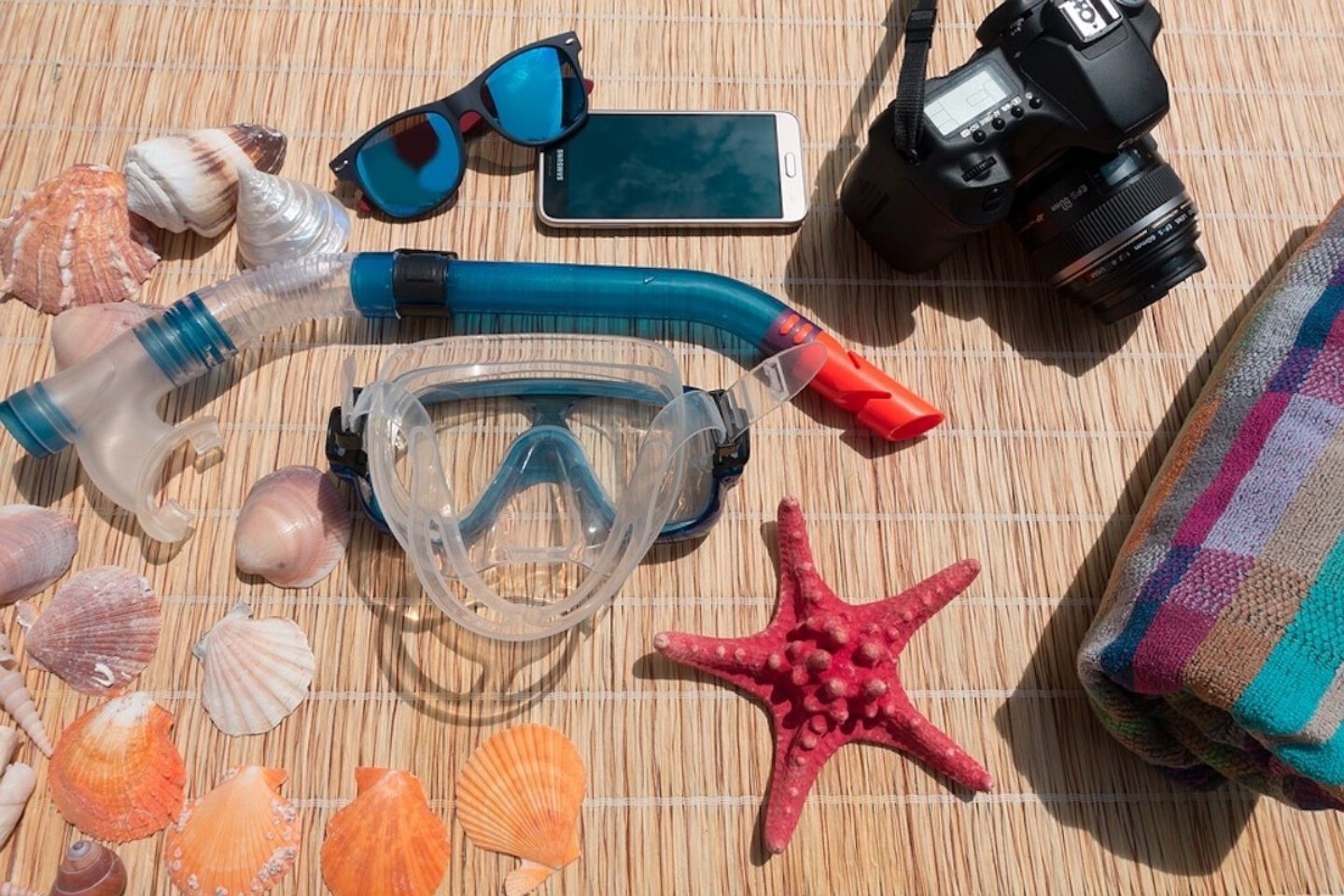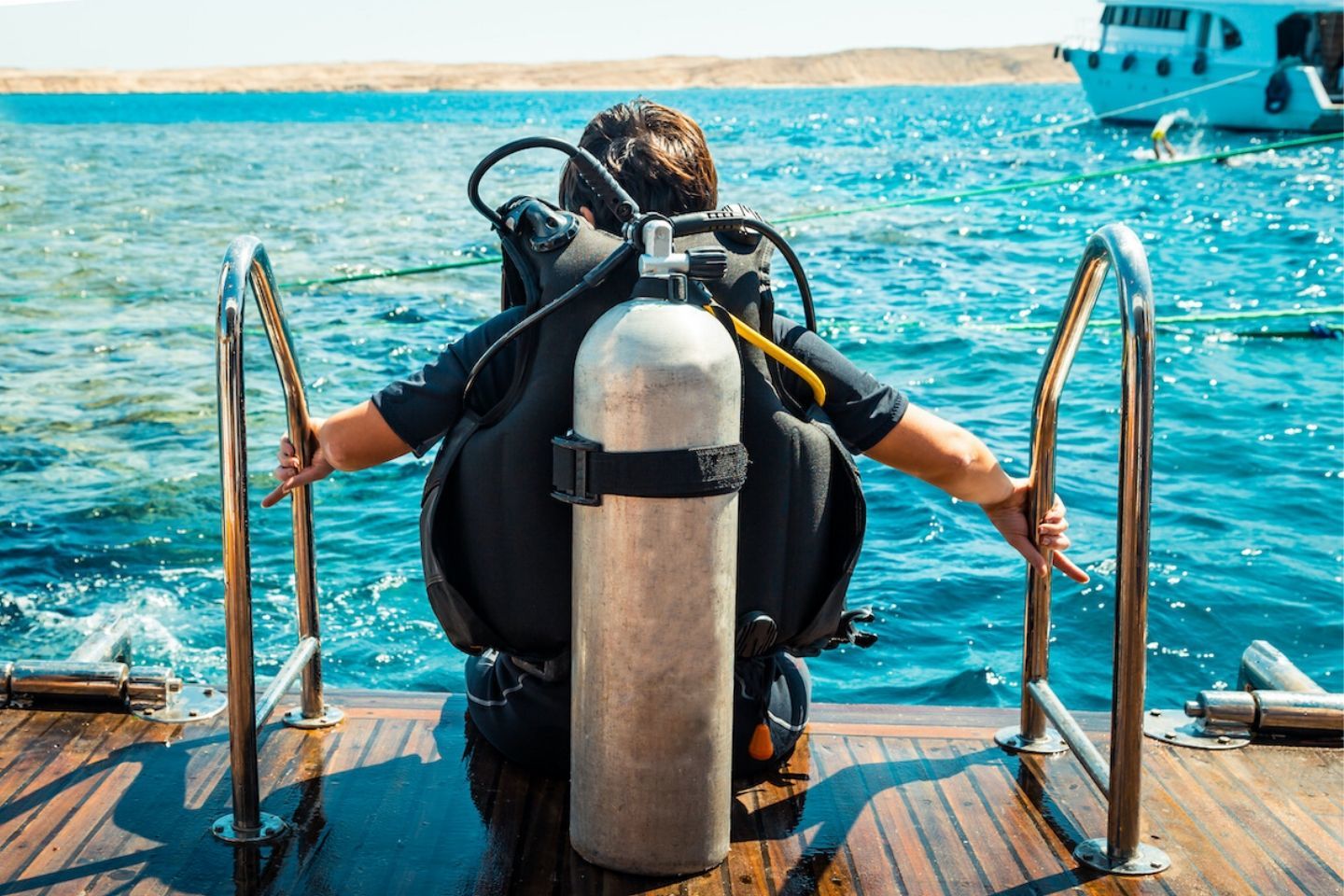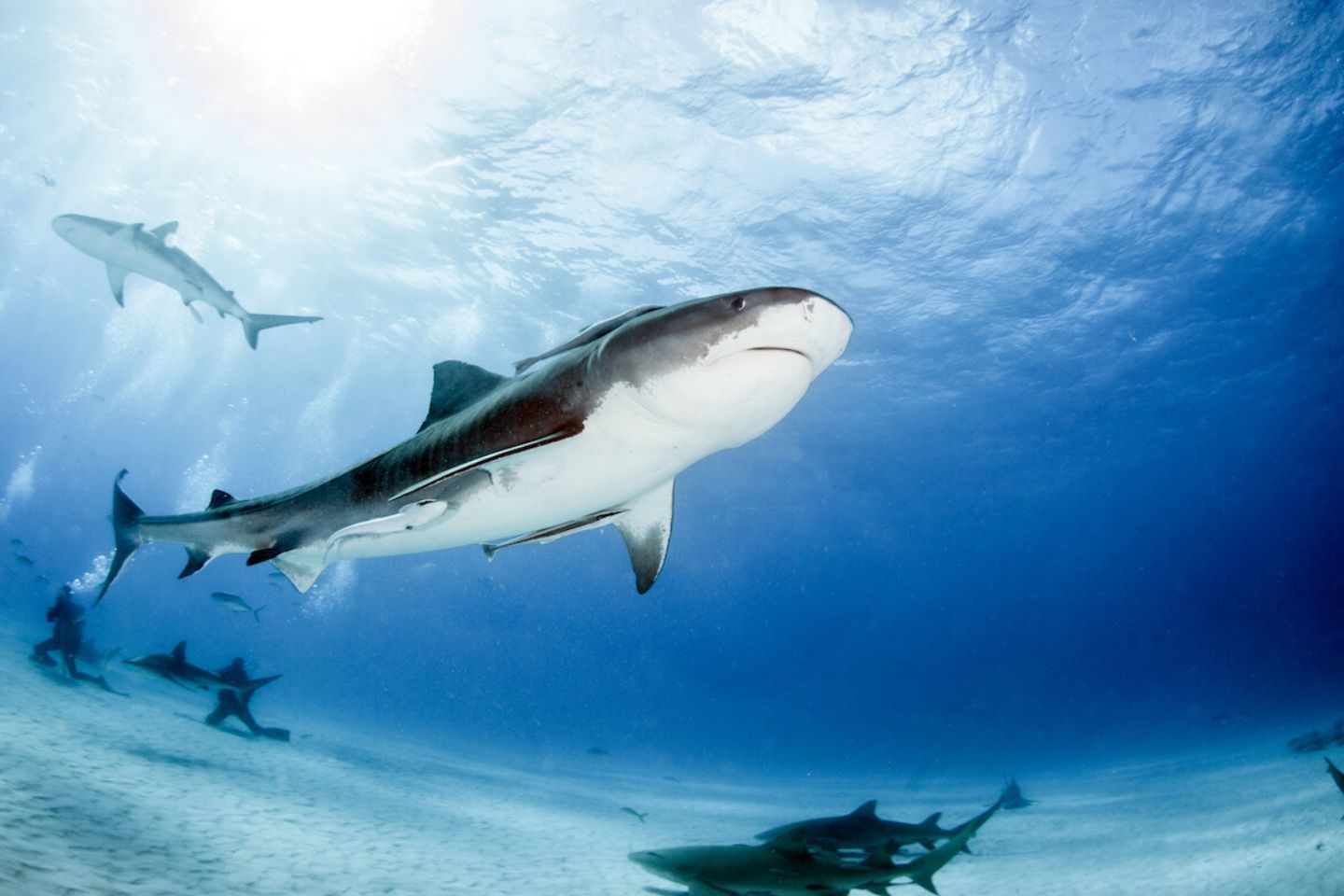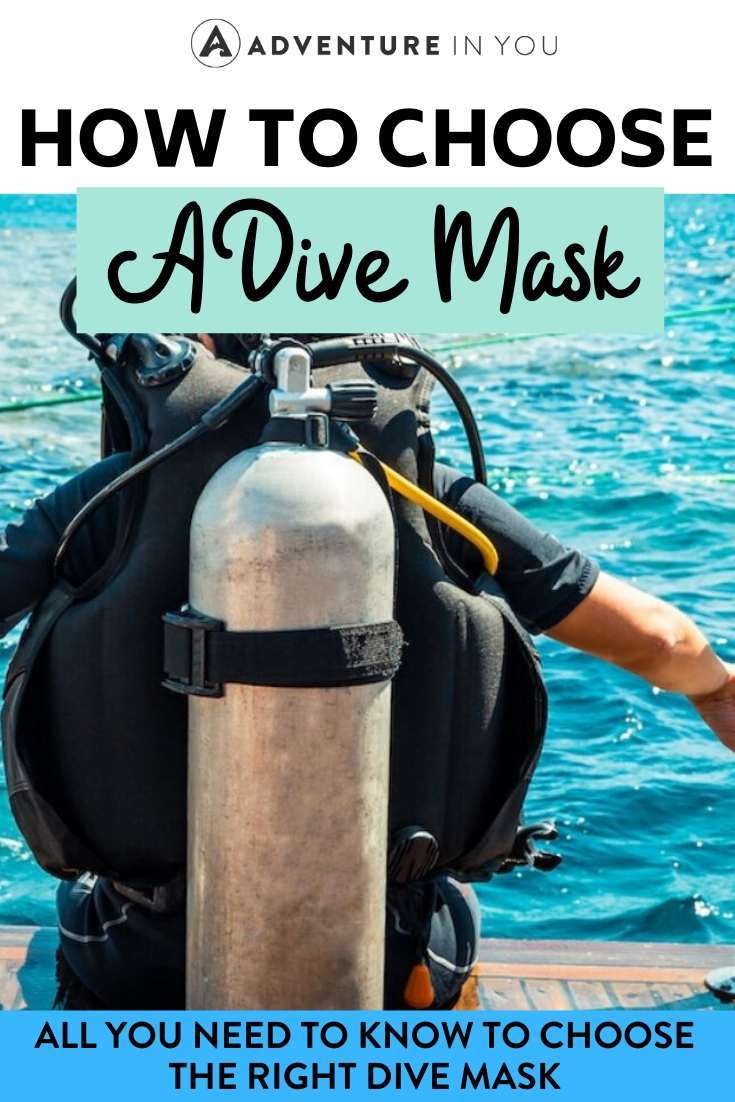Buying a dive mask for the first time is exciting but it can be overwhelming with so many options. We’ve taken the hard work out of it with our beginner’s guide to choosing the right dive mask for you.
View Contents
Mask Safety: What You Should Know
Dive masks and snorkel masks are not created equal and you should never use a snorkel mask to go diving.
Dive masks are made of more durable materials and are tested to high safety standards to meet the rigors of scuba diving.
Top Things to Consider When Choosing a Dive Mask
Before you go shopping for your first dive mask, think about what type of diving you’ll be doing and what’s most important to you as a diver.
There are many different mask styles available and each has unique advantages. Knowing your priorities before you go shopping will make it much easier to narrow down the abundant choices.
Here are some top things to consider before you hit the shops.
Your Budget
Masks don’t need to be expensive. They typically cost around $50 USD, going up to over $1000 USD for some full-face diving masks used by commercial divers.
Don’t assume that more expensive masks are better — that’s not necessarily the case! The most important thing to consider is the mask fit, which we’ll talk about next.
Get the Perfect Mask Fit
You want your dive mask to fit perfectly, so that it will only allow minimal amounts of water in around your face and you’ll be comfortable throughout your dive.
The better your mask fits, the less mask clearing you’ll need to do – meaning you can focus on enjoying the marine life around you.
Top Tip: Water can enter your mask if the seal on your face is interrupted – often by a stray hair caught in the mask skirt or by smiling!
You can find top tips for ensuring a great mask fit later in this article.

Nose Pockets Matter
I doubt you’ve spent much time thinking about mask nose pockets but this seemingly unimportant part of the mask really matters.
Flexible nose pockets make it much easier to pinch your nose and equalize your ears whilst diving.
The right nose pocket shape also prevents water entering your mask under the nose and ensures it won’t be pushing painfully onto your nose once your regulator is in your mouth.
Make sure you try a variety of masks on to find the right nose pocket fit for you.
Choose Your Mask Color with Care
There is a staggering variety of mask colors to choose from these days.
Each color has different advantages for divers:
- Clear masks let more light in, which can be helpful for preventing claustrophobia.
- Black masks reduce glare and distractions, which can be helpful when focusing on underwater photography. They also look cleaner for longer than white or clear masks.
- White and colored masks are easy to distinguish from other people’s dive kit and show up well in underwater photographs.
One, Two or Multiple-Lens Masks
Dive masks are available with one, two or multiple lenses, and also come as framed and frameless masks.
- Single-lens masks have a wide, uninterrupted view and maintain binocular vision to help with depth perception.
- Two-lens masks often have tear-shaped lenses, with a wide view across and down for perfect dive gauge visibility.
- Multiple-lens masks have additional lenses around the sides of the mask, offering plenty of light entry and the best view. They’re great for anxious divers.
Top Tip: If you’re looking for a broad view and easy equalizing, choose a single-lens mask for a broad. For travel, opt for a frameless mask. They are low volume, easy to clear, and often fold flat for packing.
Read More: Best Freediving Mask: Top 10 Low Volume Masks in 2024
Do You Need Prescription Lenses?
Two-lens masks can be customized with prescription lenses. Many dive mask manufacturers also offer pre-made corrective lenses.

Moustache Divers
If you’re diving with a moustache, you want to pay a little extra attention to get the best mask seal around your nose and prevent water entry.
Low volume masks with soft silicone skirts are popular with moustache divers.
Top Tip: Apply silicone grease on the mask skirt where it touches your moustache to prevent water entry into your mask
Long-haired Divers
Long hair can get tangled easily during diving. Neoprene mask straps help prevent tangles. Braiding your hair results in fewer tangles than simple ponytails.
How to Make Sure Your Dive Mask Fits
It’s as simple as following a few steps:
- Hold the mask against your face without attaching the strap behind your head. Let the strap hang loose and out of the way.
- Make sure all hair is away from the mask.
- Breathe in through the nose, hold your breath and look down and up, or shake your head, to see if the mask stays in place.
- A well-fitting mask will stay on the face until you exhale.
- Try the mask again, but this time attach the mask straps to see if it is comfortable or tight anywhere on the face.
- Pay attention to any pressure or touching on the bridge of the nose. A well-fitting mask should not cause facial discomfort.
Top Tip: Water pressure will hold the mask against your face when diving. You don’t need to over tighten the straps for a better fit.
Psst...Want in on a Secret? 🤫

We've scoured the internet for the best ALL-AROUND travel shoe and Tropicfeel wins by far. We've taken ours through rivers, jungles, and cities and they're still alive and kickin'. Check them out below.
Anxious About Removing Your Mask Underwater?
Learning to dive can be overwhelming for some divers, especially when it comes to taking your mask off underwater or purposefully flooding it to clear mask fog.
If the idea of mask removal makes you nervous, take some time before you go diving to overcome your fears.
With your eyes closed at home, visualize taking your mask off underwater and replacing it, whilst remaining comfortable and relaxed. Repeat until you can do this in your mind every time without any fear response.
Top Tip: Visualization is a great tool for teaching the mind new skills and overcoming dive fears.
Go ahead and book a skill session with your local dive center. A dive instructor will be more than happy to help you practice mask removal in a pool until you’re comfortable.
You can also build up to mask removal gradually. Try swimming underwater without a mask on first in a swimming pool. Once comfortable, repeat with your eyes open and get used to that sensation. Then try it again whilst breathing through a regulator until it feels natural.
What are Top Dive Destinations for New Divers?

You’ve got your new mask, and you’ve conquered any dive mask removal fears. Congratulations!
Now it’s time to get out there on your travels and experience some of the world’s best scuba diving destinations. There are a variety of destinations that are ideal for new divers.
Here are some of our top picks:
- Egypt’s Northern Red Sea (Sharm el Sheikh), for colorful coral reefs and budget-friendly liveaboards. We recommend Tillis liveaboard.
- Great Barrier Reef scuba diving, for dwarf minke whale swims (June/July) and diver-sized friendly potato cod. Best to see on Spoilsport.
- Thailand’s Similan and Surin Islands, for turquoise waters, whale sharks, and mantas. Check best deals for our favorite Sawasdee Fasai.
- The Bahamas, for easy tiger shark diving at Tiger Beach. See the best of Bahamas on Aqua cat.
- The Seychelles, for laid-back diving and sailing safaris, plus seasonal whale sharks. Have a superb experience on Galatea.
Infographic: Choosing the Right Dive Mask
To help you choose the best dive mask, check out this handy infographic with all the information you need to know!
This article was written by divers and writers at LiveAboard.com
Want more diving articles? Check out some of our best ones!
- Best Scuba Diving Destinations in the World
- Liveaboard Diving: The Ultimate Guide on Planning a Diving Holiday
- Best Galapagos Liveaboards 2024: The Ultimate Diving Experience
Inspired? Pin it!
